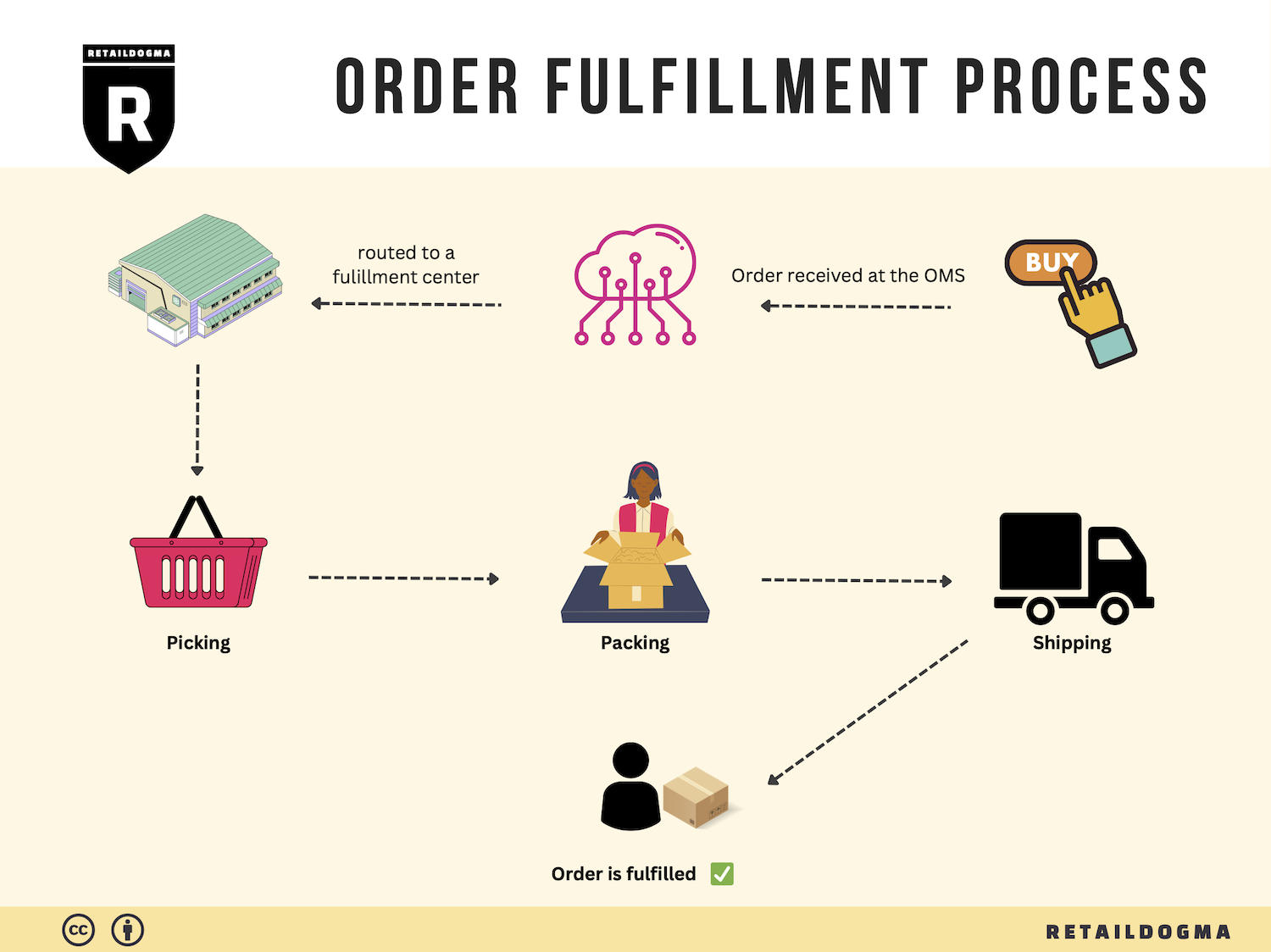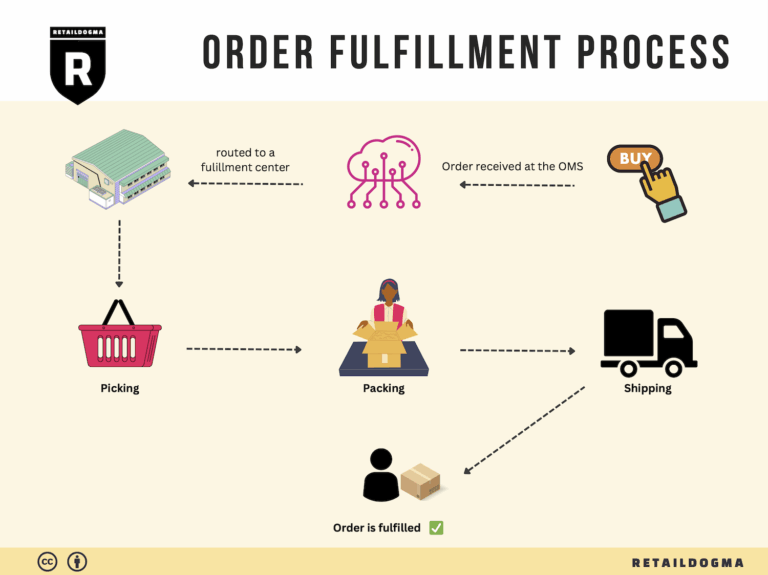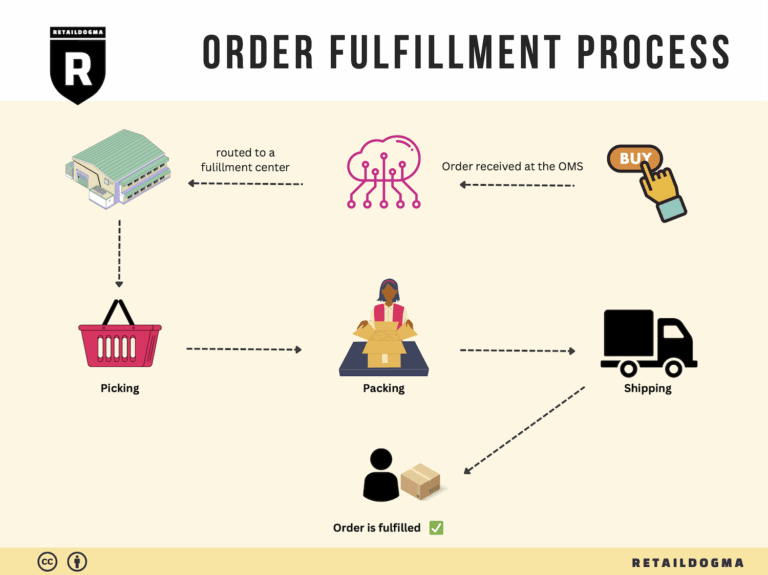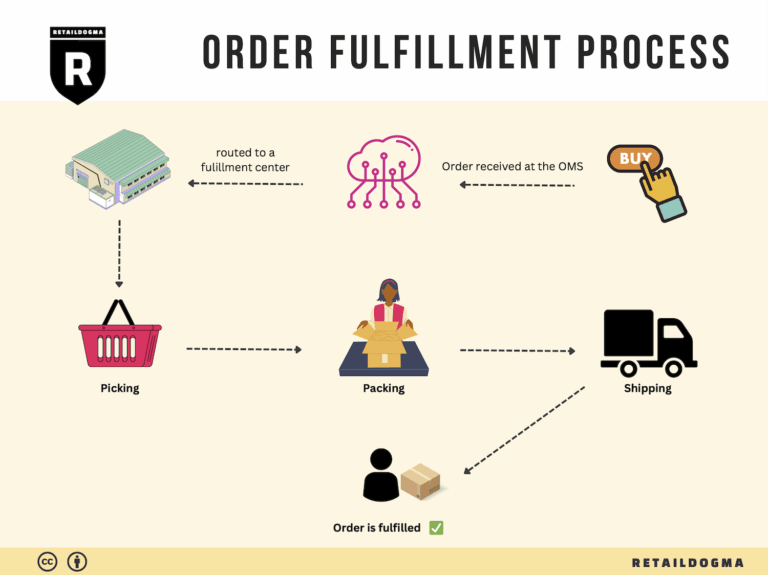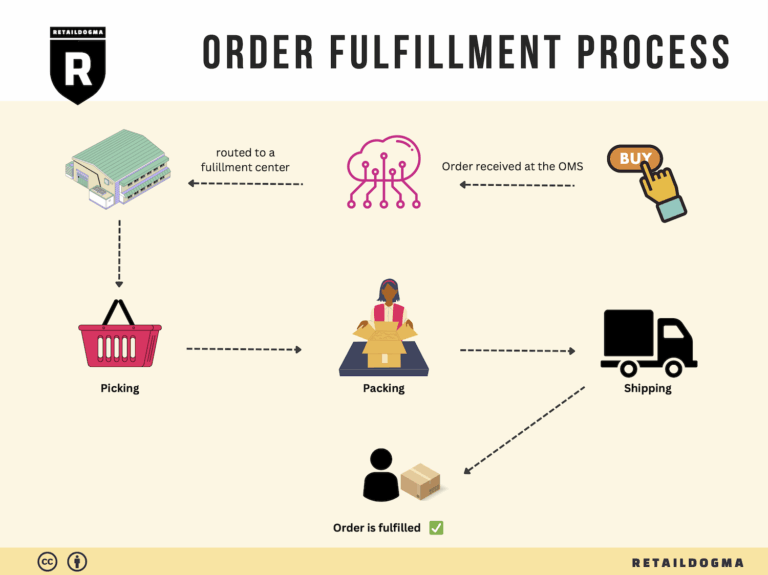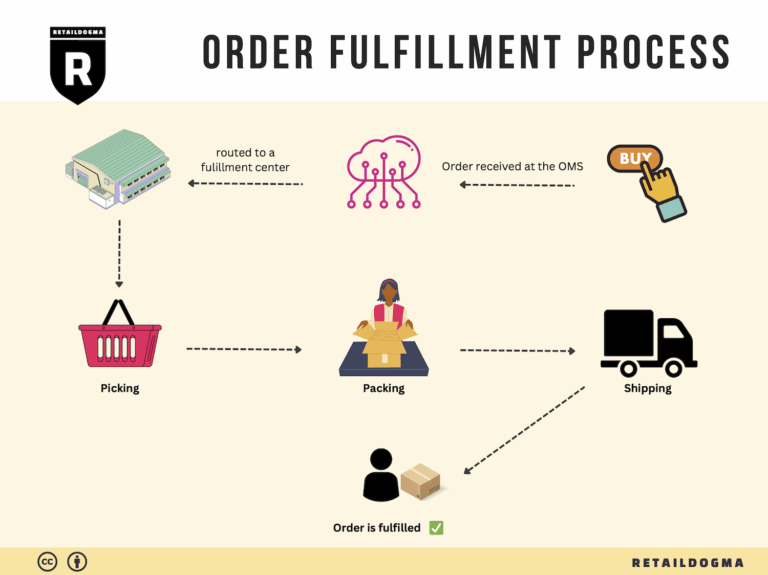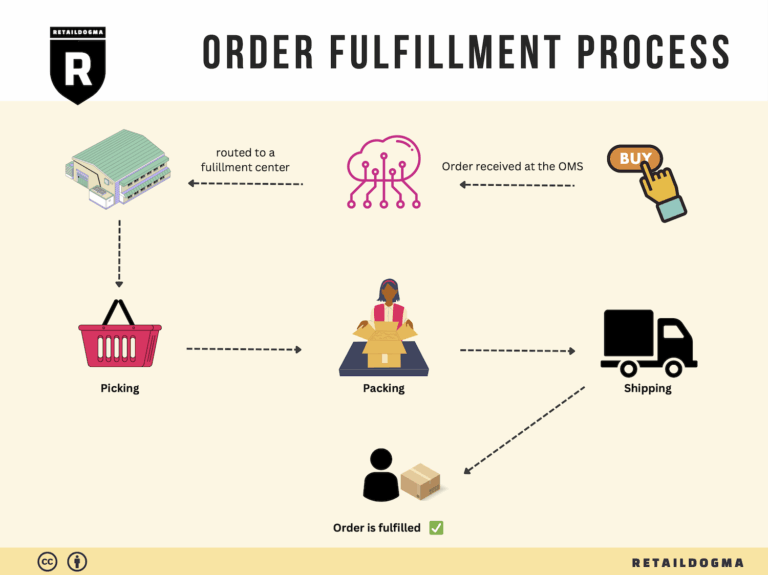Ecommerce Fulfillment Services: The Ultimate Guide (2025)
What is E-commerce Fulfillment? An Introduction for Growing Businesses
Understanding E-commerce Fulfillment
As an e-commerce business owner, you may find yourself grappling with the complexities of packing and shipping orders. This process can quickly become overwhelming, especially as your sales begin to scale. The challenge of efficiently managing logistics while ensuring customer satisfaction can divert your focus from other critical areas of your business. This is where understanding e-commerce fulfillment becomes essential.
At its core, e-commerce fulfillment is the process of getting a product from your inventory into the hands of your customer. It encompasses everything from receiving inventory, storing products, processing orders, packing, shipping, and handling returns. For growing businesses, mastering this process can be the difference between success and stagnation.
This guide aims to demystify e-commerce fulfillment for you by covering several key areas:
-
Fulfillment Models: We will explore various fulfillment options, including Third-Party Logistics (3PL) and Fulfillment by Amazon (FBA). Understanding these models will help you determine which best suits your business needs and customer expectations.
-
Core Services: We’ll break down the essential services involved in e-commerce fulfillment. This includes inventory management, order processing, packing, shipping, and returns handling. Each service plays a pivotal role in ensuring that your customers receive their orders in a timely and satisfactory manner.
-
Choosing the Right Partner: Selecting a fulfillment partner can be daunting, but it is crucial for your growth. We will discuss factors to consider when evaluating potential partners, including reliability, scalability, technology integration, and customer service.
-
Pricing: Understanding the costs associated with different fulfillment options is vital for budgeting and financial planning. We will outline common pricing structures and hidden costs, so you can make informed decisions without unpleasant surprises.
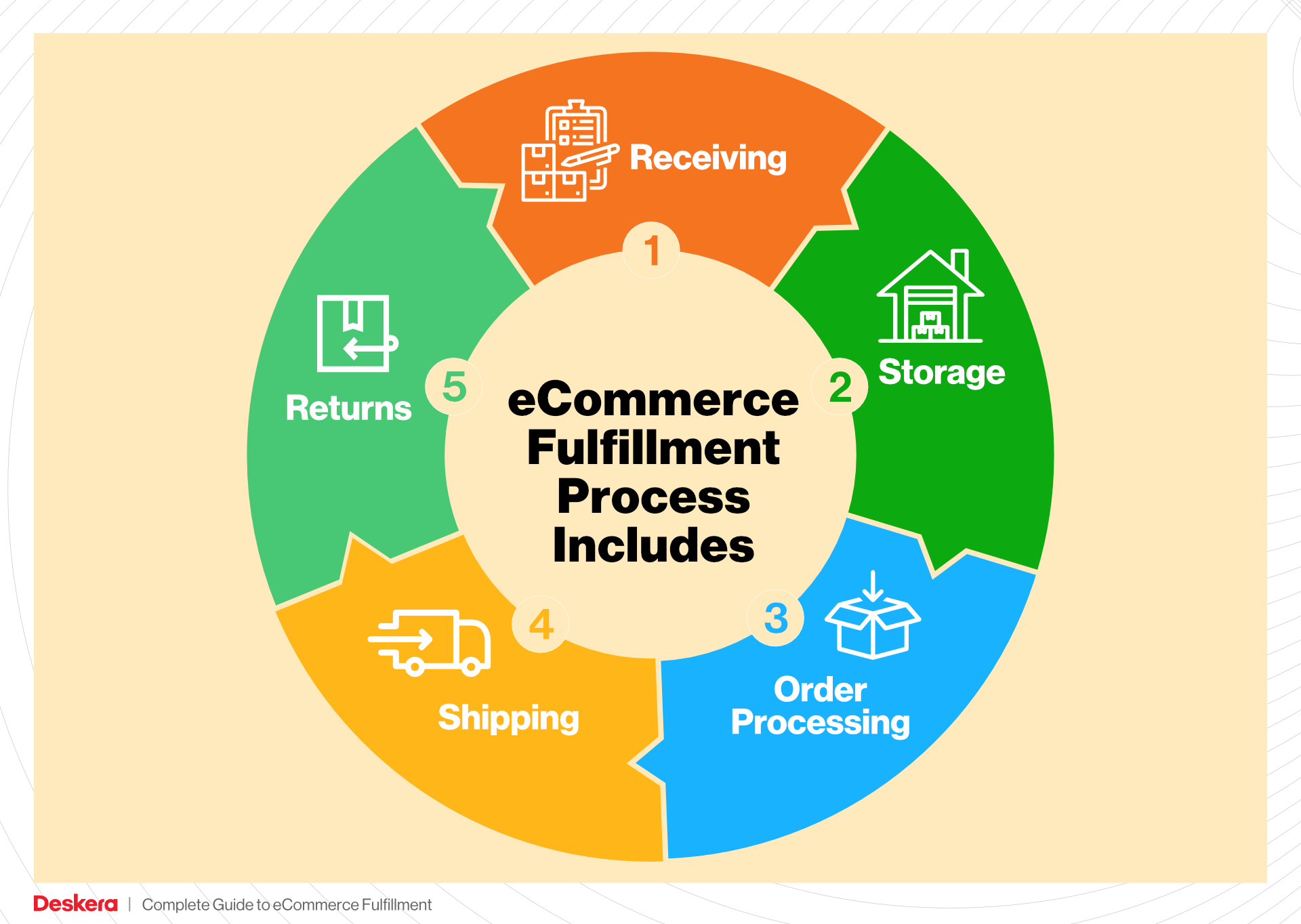
The goal of this guide is to empower you with the knowledge and tools necessary to make smart decisions about your logistics. By understanding the intricacies of e-commerce fulfillment, you can streamline operations, enhance customer satisfaction, and ultimately drive growth for your business. Whether you are just starting or looking to scale, this guide will serve as a valuable resource in navigating the fulfillment landscape.
What You’ll Learn In This Guide
- What is E-commerce Fulfillment? An Introduction for Growing Businesses
- The Order Fulfillment Process: From ‘Buy’ Button to Customer’s Door
- Comparing Fulfillment Models: In-House vs. 3PL vs. Dropshipping
- A Deep Dive into Amazon FBA: Pros, Cons, and Who It’s For
- Core Services Offered by Fulfillment Centers
- How to Choose a Fulfillment Partner: A 6-Point Checklist
- Understanding Fulfillment Pricing: A Breakdown of Common Fees
- Frequently Asked Questions (FAQs) about Fulfillment
- Conclusion: Is Outsourcing Fulfillment the Right Move for Your Business?
- Important Disclaimer
The Order Fulfillment Process: From ‘Buy’ Button to Customer’s Door
1. Receiving Inventory
The order fulfillment process begins with the receiving of inventory at the fulfillment center. This step involves accepting shipments from suppliers and vendors, which are then checked for accuracy against purchase orders. Each item is assigned a Stock Keeping Unit (SKU), a unique identifier that helps in tracking inventory throughout the supply chain.
This step is crucial because it ensures that the correct products are available for future orders. Any discrepancies, such as damaged goods or incorrect quantities, can be identified and resolved immediately, minimizing the potential for delays later in the process. Efficient receiving practices contribute to maintaining optimal inventory levels and help prevent stockouts, which can adversely affect sales and customer satisfaction.
2. Warehouse Storage
Once inventory is received and verified, it is moved to designated storage areas within the fulfillment center. Warehouse storage involves organizing products in a way that maximizes space and improves accessibility. Products are typically stored based on their SKU, size, and demand frequency, often utilizing advanced warehouse management systems (WMS) to streamline operations.
Proper storage is vital for ensuring that products are easily retrievable when orders come in. By employing strategies like ABC analysis, where products are categorized based on their sales velocity, businesses can optimize their warehouse layout. This step not only enhances order fulfillment efficiency but also reduces the time workers spend searching for items, ultimately speeding up the process from order placement to delivery.
3. Order Picking
The next step in the fulfillment process is order picking, where items are selected from the warehouse to fulfill customer orders. This process is typically guided by pick lists, which detail the items and quantities needed for each order. Depending on the fulfillment center’s size and complexity, various picking methods may be employed, including single order picking, batch picking, or zone picking.
Order picking is a critical phase in the fulfillment process, as it directly affects order accuracy and speed. The efficiency of this step can significantly impact overall customer satisfaction—errors in picking can lead to incorrect shipments, resulting in returns and frustrated customers. Implementing technology such as barcode scanners and mobile devices can enhance picking accuracy and speed, ensuring that the right products reach the right customers promptly.
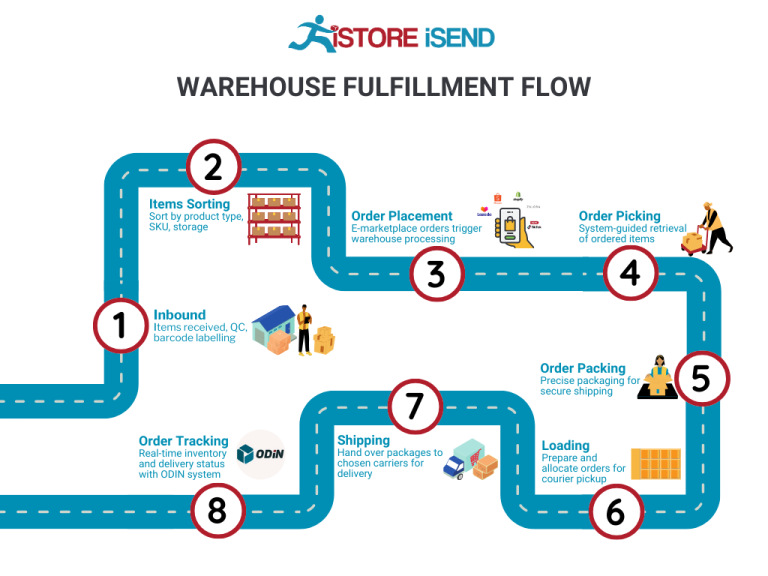
4. Order Packing
After items have been picked, they move to the order packing stage. Here, products are carefully packed into shipping boxes, often using packing materials to prevent damage during transit. This step involves generating packing slips and labels that include important information such as the destination address and tracking numbers.
Packing is essential for several reasons: it protects items during shipping, helps maintain the brand image through careful presentation, and ensures compliance with shipping regulations. The use of standardized packing methods can streamline this process, allowing for quicker assembly of packages. Additionally, businesses should consider sustainability by utilizing eco-friendly packing materials, which can appeal to environmentally conscious consumers.
5. Shipping & Delivery
The final step in the order fulfillment process is shipping and delivery. Once packages are packed and labeled, they are handed over to carriers for transportation to the customer’s address. This phase involves selecting the most efficient shipping method based on factors like cost, speed, and destination. Businesses often leverage a range of carriers to ensure flexibility and reliability.
Shipping and delivery are paramount for customer satisfaction. Delays or errors in this stage can lead to negative reviews and lost sales. Implementing a robust tracking system allows customers to monitor their orders in real-time, enhancing transparency and trust. Additionally, businesses should consider offering multiple shipping options, including expedited services, to cater to varying customer preferences. The successful execution of this step not only completes the order fulfillment process but also reinforces customer loyalty and encourages repeat purchases.
In summary, each step in the order fulfillment process—receiving inventory, warehouse storage, order picking, order packing, and shipping & delivery—plays a critical role in ensuring that products reach customers quickly and accurately. By optimizing these processes, e-commerce businesses can improve operational efficiency, enhance customer satisfaction, and ultimately scale their operations effectively.
Comparing Fulfillment Models: In-House vs. 3PL vs. Dropshipping
Fulfillment Model Comparison
| Model | Who Handles Inventory | Best For (Business Stage) | Key Advantage | Key Disadvantage |
|---|---|---|---|---|
| In-House Fulfillment | The business itself | Established businesses with stable demand | Full control over inventory and processes | High overhead costs and complexity |
| Third-Party Logistics (3PL) | A third-party provider | Growing businesses looking for scalability | Reduced logistics burden and cost efficiency | Less control over inventory management |
| Dropshipping | Supplier or manufacturer | Startups or businesses testing new markets | Low upfront investment and risk | Lower profit margins and reliance on suppliers |
In-House Fulfillment
In-house fulfillment refers to a model where a business manages its own inventory, storage, and shipping processes. This method is typically adopted by established companies that have a stable demand for their products and sufficient resources to handle logistics internally. One of the most significant advantages of in-house fulfillment is the complete control it offers over inventory management and order processing. Companies can tailor their operations to meet specific needs, ensuring quality control and customer satisfaction. However, this model comes with high overhead costs, including warehousing, staffing, and maintenance of logistics infrastructure. Additionally, it can lead to complexity in operations, making it less agile in adapting to market changes or spikes in demand.
Third-Party Logistics (3PL)
Third-party logistics (3PL) providers offer a solution where businesses outsource their fulfillment processes to specialized companies. This model is ideal for growing businesses that are looking to scale without the burden of managing logistics internally. By partnering with a 3PL, companies can leverage the provider’s expertise, infrastructure, and technology, which can significantly reduce logistics costs and streamline operations. This allows businesses to focus on their core competencies, such as product development and marketing. However, a key disadvantage is the potential loss of control over inventory management. Businesses must rely on their 3PL partner to maintain standards and accuracy, which can sometimes lead to discrepancies and affect customer satisfaction if not managed properly.
Dropshipping
Dropshipping is a fulfillment model where a business sells products without holding any inventory. Instead, when a customer places an order, the business purchases the item from a third-party supplier who ships it directly to the customer. This model is particularly advantageous for startups or entrepreneurs testing new markets, as it requires minimal upfront investment and significantly lowers financial risk. Businesses can offer a wide range of products without the need for warehousing or inventory management. However, dropshipping also has its drawbacks. Profit margins tend to be lower compared to other models, as businesses must often compete with suppliers directly. Furthermore, the reliance on suppliers for inventory and shipping can lead to issues with order fulfillment and quality control, potentially harming the business’s reputation if not carefully monitored.
In summary, choosing the right fulfillment model depends on various factors, including the stage of your business, available resources, and long-term goals. Each model has its unique advantages and disadvantages, and understanding these can help e-commerce entrepreneurs make informed decisions that align with their operational capabilities and market demands.
A Deep Dive into Amazon FBA: Pros, Cons, and Who It’s For
Understanding Fulfillment by Amazon (FBA)
Fulfillment by Amazon (FBA) is a service offered by Amazon that allows sellers to store their products in Amazon’s fulfillment centers. Amazon then takes care of storage, packaging, and shipping of these products directly to customers. This service leverages Amazon’s vast logistics network, enabling sellers to offer their products with Amazon’s trusted customer service, including returns and refunds.
FBA is particularly attractive for e-commerce businesses looking to scale, as it simplifies logistics and allows sellers to focus on growing their brands rather than managing complex shipping processes.
How FBA Works
-
Product Listing: Sellers create product listings on Amazon and specify that they want to use FBA. This can be done through Seller Central, Amazon’s web interface for managing sales.
-
Shipping Inventory: Sellers ship their products to Amazon’s fulfillment centers. Amazon has numerous fulfillment centers across the globe, ensuring products can be stored close to customers.
-
Storage: Once the products arrive at the fulfillment center, they are stored until sold. Sellers can track their inventory levels through Seller Central.
-
Order Processing: When a customer places an order, Amazon takes care of the entire fulfillment process, including picking, packing, and shipping the product.
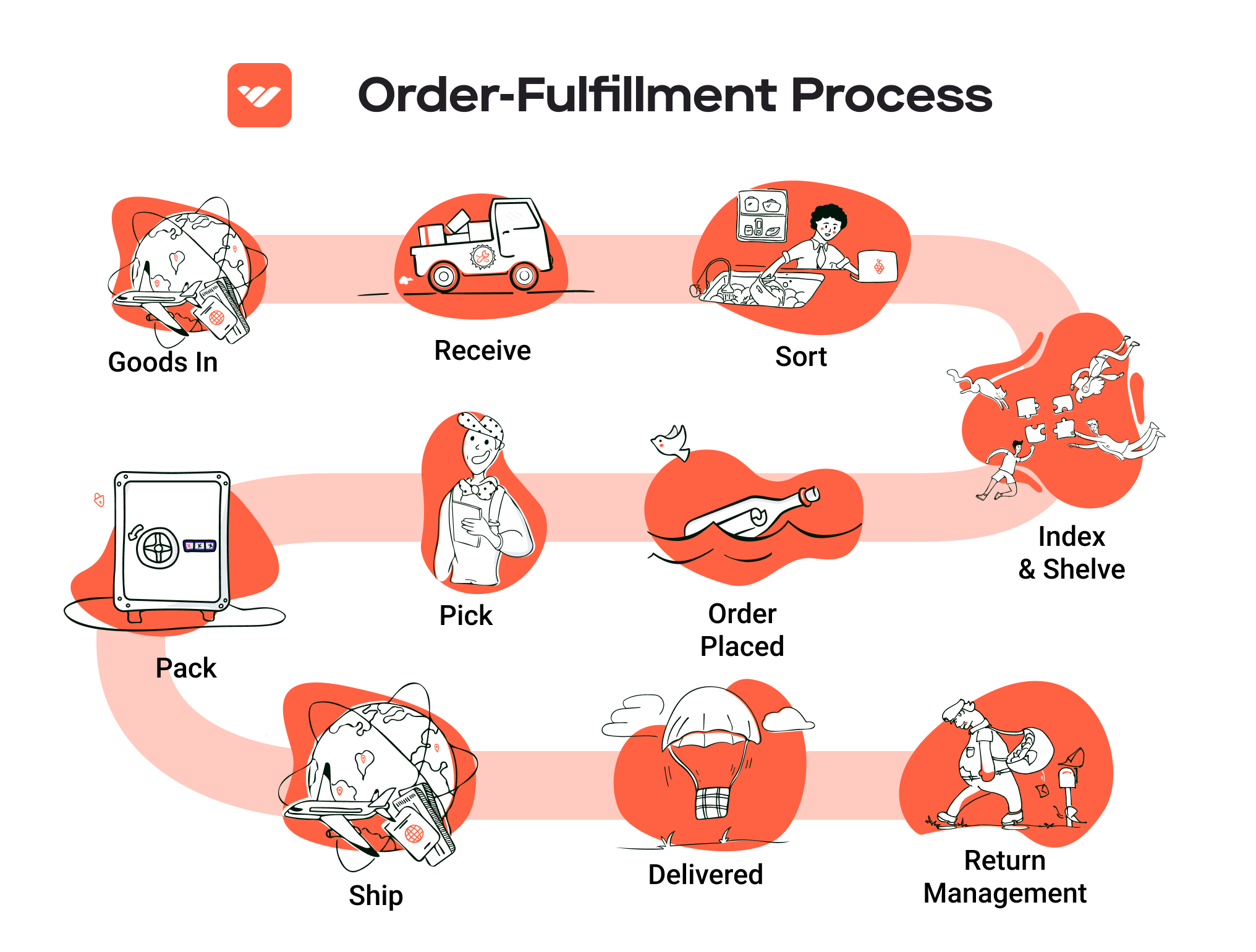
-
Customer Service: Amazon also handles customer service and returns for FBA products, providing a seamless experience for buyers.
-
Payment: After the sale, Amazon deducts FBA fees from the seller’s account and transfers the remaining balance.
Pros of Using FBA
-
Prime Eligibility: One of the significant advantages of FBA is that products become eligible for Amazon Prime. Prime members enjoy faster shipping options, which can increase your product’s visibility and sales.
-
Customer Trust: Products fulfilled by Amazon often carry a higher level of customer trust. Buyers are more likely to purchase products that have the backing of Amazon’s customer service and return policies.
-
Multi-Channel Fulfillment: FBA allows sellers to fulfill orders from other sales channels (like their own website) using Amazon’s logistics. This can help streamline operations and reduce shipping costs.
-
Scalability: FBA is designed to help businesses scale. As sales grow, sellers can leverage Amazon’s infrastructure without needing to invest heavily in their own warehousing and shipping capabilities.
-
Time Savings: By outsourcing logistics to Amazon, sellers can focus on other aspects of their business, such as marketing and product development.
-
Advanced Logistics: Amazon’s sophisticated logistics and technology ensure that products are stored, packed, and shipped efficiently, often resulting in faster delivery times.
Cons of Using FBA
-
High Fees: FBA comes with various fees, including storage fees and fulfillment fees. These can add up, particularly for sellers with low-margin products or those that have slow-moving inventory.
-
Strict Inventory Rules: Amazon has stringent policies regarding inventory management, including limits on storage and requirements for product preparation. Failing to comply can result in penalties or restrictions on selling.
-
Commingling Risks: FBA has a policy of commingling inventory, meaning that your products may be stored alongside those of other sellers. This can lead to issues if products are mixed up, affecting your brand reputation and customer satisfaction.
-
Less Control Over Branding: When using FBA, sellers lose some control over the packaging and branding of their products, as Amazon’s standard packaging is used for shipments.
-
Potential for Long-Term Storage Fees: If inventory doesn’t sell quickly, sellers can incur long-term storage fees, which can be a burden for slow-moving items.
-
Complex Return Process: Although Amazon manages returns, the process can sometimes be complex and lead to increased return rates, especially for sellers of specific product types.
Who is FBA Best For?
FBA is ideal for a wide range of e-commerce businesses, but particularly those that:
-
Have High Sales Volumes: Businesses that sell in large quantities can benefit significantly from Amazon’s logistics capabilities and the visibility that comes with Prime eligibility.
-
Sell Consumer Goods: Products that have broad consumer appeal and can be shipped quickly are often a good fit for FBA.
-
Are New to E-Commerce: Startups or entrepreneurs who are new to e-commerce and want to minimize logistics headaches can find FBA a practical solution.
-
Lack Warehousing Capabilities: Businesses without the infrastructure or resources to manage their own fulfillment can leverage FBA to scale efficiently.
-
Want to Focus on Growth: Sellers who want to concentrate on marketing, product development, and customer engagement rather than logistics will find FBA beneficial.
In conclusion, FBA provides a powerful platform for sellers looking to enhance their e-commerce operations. While it offers numerous advantages, such as increased visibility and reduced logistical burdens, it also comes with challenges that should be carefully considered. By evaluating the pros and cons, businesses can make informed decisions about whether FBA aligns with their growth strategies.
Core Services Offered by Fulfillment Centers
Inventory Management & Warehousing
Inventory management and warehousing are foundational services provided by fulfillment centers. This involves the systematic storage, tracking, and management of products that e-commerce businesses sell. Fulfillment centers utilize advanced software systems to monitor stock levels, manage reordering processes, and provide real-time visibility into inventory status.
Benefits for E-commerce Businesses:
-
Enhanced Accuracy: With sophisticated inventory management systems, fulfillment centers reduce errors associated with manual tracking, ensuring that businesses maintain accurate inventory levels. This minimizes the risk of stockouts or overstock situations, which can significantly affect cash flow and customer satisfaction.
-
Space Optimization: By leveraging the warehousing capabilities of fulfillment centers, e-commerce businesses can free up valuable retail or office space. This is particularly advantageous for smaller businesses that may not have the capacity to store large quantities of inventory.
-
Scalability: As e-commerce businesses grow, their inventory needs will fluctuate. Fulfillment centers offer scalable solutions, allowing companies to adjust their inventory storage based on demand without the need for large capital investments in physical space.
Pick and Pack Services
Pick and pack services involve the process of selecting items from inventory (picking) and preparing them for shipment (packing). This is a critical operation within fulfillment centers that directly impacts delivery speed and accuracy.
Benefits for E-commerce Businesses:
-
Efficiency: Fulfillment centers are equipped with optimized picking systems, which can include automated technologies and trained staff. This leads to faster order processing times, ensuring that customers receive their orders promptly. In an era where consumers expect rapid delivery, this service is essential for maintaining competitive advantage.
-
Cost-Effectiveness: By outsourcing pick and pack services, e-commerce businesses can save on labor costs and overhead associated with maintaining their own fulfillment staff and facilities. This allows companies to focus their resources on marketing, product development, and customer service.
-
Customization: Many fulfillment centers offer customized packing options, allowing businesses to brand their packaging or include promotional materials. This personalization can enhance customer experience and foster brand loyalty.
Kitting and Assembly
Kitting and assembly services involve the grouping of multiple products into a single package or preparing products for sale. This could include assembling components for a product, creating gift bundles, or simply organizing items for easier distribution.
Benefits for E-commerce Businesses:
-
Streamlined Operations: By utilizing kitting services, e-commerce businesses can streamline their operations. Instead of managing multiple SKUs, they can offer bundled products, which simplifies inventory management and order fulfillment.
-
Increased Sales Opportunities: Kitting can create unique product offerings that appeal to consumers looking for convenience. For example, gift baskets or themed bundles can attract customers during holiday seasons or special promotions, potentially increasing average order values.
-
Quality Control: Fulfillment centers that offer kitting and assembly services often have stringent quality control measures in place. This ensures that products are correctly assembled and packaged, reducing the likelihood of returns due to incorrect orders or damaged items.
Returns Management (Reverse Logistics)
Returns management, or reverse logistics, refers to the process of handling returned merchandise. This service is vital for e-commerce businesses as it encompasses everything from processing returns to restocking items and handling exchanges.
Benefits for E-commerce Businesses:
-
Customer Satisfaction: An efficient returns management process can significantly enhance customer satisfaction. When customers know they can easily return products, they are more likely to make a purchase, even if they have doubts about the item. Fulfillment centers facilitate hassle-free returns, which can lead to repeat business.
-
Data Insights: Returns management services often include analytics that can provide valuable insights into product performance, customer preferences, and potential issues. Understanding the reasons behind returns can help businesses make informed decisions about inventory, product quality, and customer service improvements.
-
Operational Efficiency: By outsourcing returns management to a fulfillment center, e-commerce businesses can streamline their operations. This allows them to focus on core activities like marketing and sales, while ensuring that returns are handled efficiently and effectively.
In conclusion, fulfillment centers like Amazon’s RDG1 offer a comprehensive suite of services that can significantly enhance the operational efficiency of e-commerce businesses. By leveraging these services, companies can focus on growth and customer engagement while ensuring that their logistics and fulfillment processes are robust and reliable.
How to Choose a Fulfillment Partner: A 6-Point Checklist
Location & Warehouse Network
Importance:
The geographical location of your fulfillment partner’s warehouses significantly impacts shipping costs and delivery times. A partner with strategically located facilities can reduce transit times, which is critical for customer satisfaction and can lower shipping expenses.
Questions to Ask:
– Where are your fulfillment centers located, and how does that align with my customer base?
– Do you have a network of warehouses that can support regional distribution?
– Can you provide insights on your average shipping times to various regions?
Technology & Integrations
Importance:
In today’s e-commerce environment, having robust technology and seamless integrations with your existing systems (like your e-commerce platform, inventory management tools, and CRM) is essential. Advanced technology can enhance order accuracy, inventory visibility, and overall efficiency.
Questions to Ask:
– What technology platforms do you use for order management, inventory tracking, and shipping?
– How do you handle integrations with major e-commerce platforms (like Amazon, Shopify, or WooCommerce)?
– Can your systems provide real-time data and analytics on order status and inventory levels?
Specializations (e.g., Cold Storage, Oversized Items)
Importance:
If your products require special handling—such as temperature control for perishables or extra care for fragile items—partnering with a fulfillment provider that specializes in these areas is crucial. Understanding their capabilities can prevent costly damages and ensure compliance with regulatory standards.
Questions to Ask:
– Do you have specialized facilities for handling specific product types (e.g., cold storage, oversized items)?
– What certifications or compliance measures do you have in place for specialized storage?
– Can you provide case studies or references from clients with similar product requirements?
Scalability & Capacity
Importance:
As your business grows, your fulfillment needs will likely change. Choosing a partner that can scale with your business—whether through additional warehouse space, technology upgrades, or staffing—is vital for long-term success. A partner with adequate capacity can help you manage peak seasons without compromising service quality.
Questions to Ask:
– How do you handle seasonal fluctuations in order volume?
– What is your current capacity, and how quickly can you scale up if needed?
– Can you provide examples of how you have supported clients during periods of rapid growth?
Pricing and Contracts
Importance:
Understanding the pricing structure and contract terms of potential fulfillment partners is essential to ensure that you are not only getting a good deal but also that there are no hidden fees that could impact your bottom line. Transparent pricing helps in budgeting and financial planning.
Questions to Ask:
– What is your pricing structure (e.g., per order, per item, storage fees)?
– Are there any additional fees for services such as returns processing or special handling?
– What is the length of the contract, and what are the terms for cancellation or changes?
Customer Support & Reviews
Importance:
Reliable customer support is crucial for resolving issues quickly and maintaining smooth operations. Partnering with a fulfillment provider that values customer service can enhance your overall experience and help build a resilient supply chain.
Questions to Ask:
– What customer support options do you offer (e.g., phone, email, chat)?
– How do you handle complaints or issues that arise during the fulfillment process?
– Can you provide references or reviews from current or past clients regarding your customer service?
Conclusion
Choosing the right fulfillment partner is a critical decision that can greatly affect your e-commerce business’s efficiency, customer satisfaction, and scalability. By using this checklist, e-commerce business owners, operations managers, and entrepreneurs can systematically evaluate potential partners and make informed decisions that align with their growth objectives. Prioritizing these six areas will help ensure that your fulfillment partner can meet your current needs and adapt to future changes in your business landscape.
Understanding Fulfillment Pricing: A Breakdown of Common Fees
Initial Setup Fees
Initial setup fees are often one of the first costs you encounter when partnering with a fulfillment center like Amazon’s RDG1. These fees cover the onboarding process, which may include account setup, integration with your e-commerce platform, and initial training sessions for your team. The amount charged can vary significantly based on the complexity of your needs and the level of customization required for your fulfillment process.
To calculate these fees, fulfillment centers typically consider the time and resources needed to get your account operational. This may also include any software integration necessary to streamline order processing. As a business owner, it’s crucial to clarify what is included in the setup fee and whether there are recurring charges associated with the services you select.
Receiving Fees
Receiving fees are charged when your inventory arrives at the fulfillment center. These fees cover the labor and resources required to unload, inspect, and store your goods. The calculation of receiving fees can be based on several factors:
- Volume of Inventory: Larger shipments may incur higher fees due to the extra labor involved.
- Condition of Goods: If your products require special handling or inspection, expect additional charges.
- Complexity of Receiving: If your shipment consists of mixed SKUs or requires special processing, the costs may rise.
Understanding how these fees are calculated can help you optimize your inventory management and choose the best shipping methods to minimize costs.
Storage Fees (per pallet/bin)
Storage fees are charged based on the space your inventory occupies within the fulfillment center. This can be calculated on a per-pallet or per-bin basis, depending on how your products are stored. Factors influencing storage fees include:
- Duration of Storage: Longer storage times can lead to increased fees, especially if your inventory is not moving quickly.
- Seasonality: Many fulfillment centers charge higher fees during peak seasons when space is at a premium.
- Type of Products: Hazardous materials or oversized items may incur additional storage fees due to special handling requirements.
To keep storage costs manageable, regularly review your inventory turnover rates and consider implementing strategies for efficient stock management.
Pick & Pack Fees (per item/order)
Pick and pack fees are incurred each time an order is processed. This fee encompasses the labor involved in picking items from storage, packing them for shipment, and preparing them for delivery. The calculation of these fees often depends on:
- Number of Items: The more items in an order, the higher the fee, as each item requires individual handling.
- Complexity of Packaging: Special packaging requirements, such as fragile items or gift wrapping, can increase costs.
- Order Frequency: Some fulfillment centers offer volume discounts for businesses that ship high volumes of orders.
To optimize your pick and pack costs, consider simplifying your product offerings or using standardized packaging materials.
Shipping Fees
Shipping fees represent a significant portion of fulfillment costs and can vary based on multiple factors, including:
- Shipping Carrier: Different carriers offer varying rates, so it’s essential to choose one that aligns with your budget and delivery speed requirements.
- Destination: Shipping costs can increase dramatically for international shipments or remote areas.
- Weight and Dimensions: Heavier and larger packages often incur higher shipping fees, so consider optimizing product sizes and weights where possible.
Understanding the nuances of shipping fees can empower you to negotiate better rates with carriers or explore alternative shipping methods that align with your business model.
Tips for Getting an Accurate Quote
-
Detailed Inventory Information: Provide precise details about your products, including dimensions, weights, and packaging requirements. This information is crucial for accurate receiving, storage, and shipping fee calculations.
-
Understand Your Needs: Clearly outline your fulfillment needs, including order volume, peak seasons, and any special handling requirements. This will help the fulfillment center tailor a quote that aligns with your business operations.
-
Ask About Hidden Fees: Inquire about any additional costs that may not be included in the initial quote, such as returns handling, long-term storage fees, or seasonal adjustments.
-
Compare Multiple Quotes: Don’t hesitate to seek quotes from multiple fulfillment centers. This not only helps you gauge the market rate but also provides insights into the services offered by different providers.
By understanding these common fulfillment pricing models and proactively engaging with fulfillment centers, you can make informed decisions that optimize your logistics and ultimately support your business growth.
Frequently Asked Questions (FAQs) about Fulfillment
1. What is the Amazon RDG1 Fulfillment Center?
The Amazon RDG1 Fulfillment Center, located in Hamburg, Pennsylvania, is a state-of-the-art logistics facility where Amazon processes and fulfills online orders. This center plays a crucial role in Amazon’s extensive supply chain, managing inventory, sorting products, and ensuring timely delivery to customers.
2. How does the fulfillment process work at RDG1?
The fulfillment process at RDG1 involves several key steps: receiving inventory, storing products in organized shelving, picking items based on customer orders, packing them for shipment, and finally, dispatching them to delivery carriers. This streamlined process ensures efficiency and speed, crucial for meeting consumer expectations in e-commerce.
3. What is the difference between a warehouse and a fulfillment center?
A warehouse is primarily used for the storage of goods, while a fulfillment center is specifically designed to handle the process of receiving, packing, and shipping orders directly to customers. Fulfillment centers are optimized for quick order processing and often include advanced technology for inventory management and shipping logistics.
4. What are the benefits of using Amazon’s fulfillment services?
Using Amazon’s fulfillment services, such as those offered at RDG1, provides several benefits, including access to Amazon’s vast logistics network, fast shipping options (like same-day delivery), simplified inventory management, and the ability to scale operations without investing heavily in infrastructure.
5. How much do fulfillment services cost?
Fulfillment service costs can vary widely based on factors such as the volume of orders, the size and weight of products, storage fees, and additional services like packaging and returns processing. Generally, businesses can expect to pay per order fulfilled, along with monthly storage fees for inventory held at the fulfillment center.
6. What is a 3PL, and how does it relate to Amazon RDG1?
A 3PL, or third-party logistics provider, is a company that offers outsourced logistics services, including warehousing, fulfillment, and transportation. Amazon RDG1 acts as a 3PL for sellers on the Amazon platform, enabling them to leverage Amazon’s infrastructure for efficient order fulfillment without managing their own warehouses.
7. Can I track my orders fulfilled by the RDG1 center?
Yes, orders fulfilled by the RDG1 Fulfillment Center can be tracked using Amazon’s order tracking system. Customers receive tracking information once their orders are dispatched, allowing them to monitor the shipping progress in real-time.
8. What types of products can be stored at the RDG1 Fulfillment Center?
The RDG1 Fulfillment Center can store a wide variety of products, ranging from electronics and household items to apparel and books. However, there are restrictions on certain categories, such as hazardous materials or perishables, which may require special handling or storage conditions.
9. How does Amazon handle returns at the RDG1 Fulfillment Center?
Amazon has a streamlined returns process for items fulfilled by RDG1. Customers can initiate returns through their Amazon account, and the fulfillment center processes these returns by inspecting, restocking, or disposing of returned items as per Amazon’s policies.
10. How can businesses partner with the RDG1 Fulfillment Center?
Businesses looking to partner with the RDG1 Fulfillment Center can do so by enrolling in Amazon’s Fulfillment by Amazon (FBA) program. This program allows sellers to store their products at Amazon’s fulfillment centers, where Amazon then handles storage, packing, shipping, and customer service, providing a comprehensive solution for e-commerce logistics.
Conclusion: Is Outsourcing Fulfillment the Right Move for Your Business?
Evaluating the Benefits of Outsourcing Fulfillment
Outsourcing fulfillment can be a game-changer for e-commerce businesses looking to scale. One of the most significant advantages is the time savings it provides. By partnering with a fulfillment center, such as Amazon’s RDG1, you can offload the complexities of inventory management, order processing, and shipping logistics. This allows you to focus more on strategic initiatives like product development and marketing, rather than getting bogged down in operational details.
Scalability is another critical benefit. As your business grows, so do your fulfillment needs. A fulfillment partner can easily adapt to increased order volumes, seasonal fluctuations, and diverse product lines without the need for you to invest in additional infrastructure or workforce. This flexibility is vital in today’s fast-paced e-commerce landscape, where customer expectations for quick delivery are higher than ever.
Furthermore, leveraging the expertise of a fulfillment service can lead to improved efficiency and customer satisfaction. Fulfillment centers employ advanced technologies and optimized processes to ensure quick and accurate order fulfillment. This expertise not only enhances your operational efficiency but also strengthens your brand reputation as customers receive their orders promptly and accurately.
Choosing the right fulfillment partner is paramount for your business’s growth. A well-aligned partner can provide the infrastructure and support necessary to meet your evolving needs and help you stay competitive in the market.
Take Action Today
To determine if outsourcing fulfillment is the right move for your business, conduct a thorough audit of your current shipping process. Assess your operational bottlenecks, shipping costs, and customer satisfaction levels. This insight will help you decide whether partnering with a fulfillment service can propel your business forward. Don’t wait—start exploring your options today to position your business for sustainable growth.
Important Disclaimer
⚠️ Important Disclaimer
The information in this guide is for educational purposes. Fulfillment services, pricing, and platform features change frequently. Always conduct your own due diligence and consult with providers directly before making business decisions.
